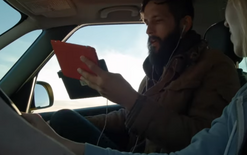Volvo’s high-tech approach to cut road toll

Volvo NZ is planning to introduce new technology to its cars to help reduce the number of road deaths and injuries caused by distracted driving.
Ben Montgomery, general manager, says research from Waka Kotahi NZ Transport Agency shows a large number of drivers are engaged in high-risk behaviours.
“We also know that automotive safety technology has a significant role to play in reducing the rate of unnecessary deaths and injuries on our roads each year,” he explains.
“In the near future, Kiwi Volvo owners can expect to see the introduction of a new driver-monitoring system that uses cameras and sensors to detect whether the driver is distracted and allows the car to intervene if a clearly intoxicated or unfocused driver does not respond to warning signals.”
He adds Volvo is also exploring the possibility of using geofencing, a technology that automatically reduces a vehicle’s speed around schools and hospitals.
Montgomery notes the transport agency’s study shows 44 per cent of people surveyed think the risk of being caught speeding is small.
“New vehicle safety systems can also play a part when it comes to addressing the impact of excessive speed on the road toll,” he says.
“As a carmaker, Volvo has already taken the first step by limiting the maximum speed its vehicles can travel at on the open road, providing owners with a Care key that restricts speed when the vehicle is loaned to another driver.
“Standard features such as Pilot Assist can also help the driver to drive the car between the lane’s side markings using steering assistance as well as to maintain an even speed, combined with a preselected time interval to the vehicle ahead.
“The development of this technology is part of Volvo Cars’ vision of a future with zero traffic fatalities.”
Volvo Cars is also testing communication between cars and infrastructure in China. For example, when a vehicle is aware of upcoming traffic issues such as road works, congestion or accidents, it can take pre-emptive action such as slowing down or suggesting a different route.
Risky behaviour
Volvo’s plans emerge after government research suggests complacency among Kiwi drivers, with many engaged in high-risk behaviour on our roads including driving under the influence of drugs, texting and using social media while behind the wheel.
There were 318 people killed and almost 2,500 seriously injured on New Zealand roads in 2020, with excessive speeding, intoxication and distraction a factor in many collisions each year.
A study from Waka Kotahi shows 21 per cent of Kiwi drivers have had trouble staying awake on a long trip at least once in the past 12 months and 32 per cent say it is unlikely they would pull over and rest if they felt drowsy.
The research shows 16 per cent of drivers used a handheld phone while driving and 23 per cent have sent or read text messages while behind the wheel in the past year.
In addition, seven per cent have checked or replied to their social media.
A number of drivers also admitted to driving while under the influence of drugs –including prescription medications, seven per cent, and other drugs such as cannabis or methamphetamine, three per cent.





